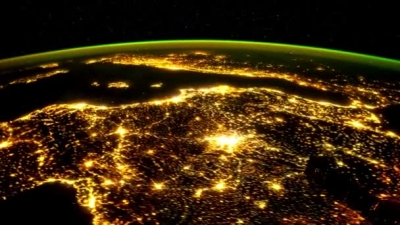
ELECTRICITY
From running a home computer to lighting up the world’s cities at night, electricity powers almost everything that we use. Electricity is one of the most useful forms of energy because it can be readily converted into other types of energy such as light, heat, or movement. Electricity results from the behaviour of tiny particles, called electrons, each of which possesses an electric charge. When an electric charge builds up in one place it is called static electricity. If the charge flows from place to place it is known as current electricity.
- Electricity is generated when coils of wire are rotated in a magnetic field. This forces electrons along the wire to form an electric current.
- In power stations, the force to rotate the coils is provided by water power (hydroelectricity), or by steam heated by oil, coal, gas, or the process of nuclear fission.
- A current only flows if it has a circuit to travel around. A current needs a conductor to flow through, something to power, and, usually, an energy source to drive the current.
- All conductors have a certain resistance to the flow of an electric current. When a conductor resists the current, the electrical energy is turned into heat.
- Materials with electrons that cannot move are unable to conduct electricity and are known as insulators. Electric wire is insulated with plastic or rubber.
- Electricity leaves power stations through metal cables on tall pylons. The power is sent out at a much higher voltage than is used in most homes.
- Before arriving in a city, the voltage is reduced by a transformer at a sub-station. It then travels across the city in cables under the streets.
- In some earthquake-prone cities, such as Tokyo, Japan, electricity is carried in overhead cables. Underground cables would be too prone to earthquake damage.
- A flash of lightning is a giant spark of electricity driven by static electricity (charge) that builds up inside a cloud from a collision of ice crystals and water droplets.
- Static electricity also occurs when you comb your hair or take off a synthetic sweater. It is caused by two things rubbing together and creating a charge.
- The human body is full of electricity. The 100 billion nerve cells in each person’s brain work by sending messages in bursts of electricity (impulses).
- North America The USA has less than 5 per cent of the world’s population, but uses more than 15 per cent of the world’s electricity, most of it generated in coal-fired power stations. In Canada, hydroelectric generation accounts for more than half of all electricity generated.
- South America Some countries in this continent produce electricity using ethanol, a renewable “green” fuel made from the byproducts of sugar cane.
- Antarctica The only people who live here are scientific researchers. Their electricity is mostly provided by diesel-powered generators, but also increasingly from wind and solar power.
- Europe A variety of different sources are used to generate electricity in Europe, including nuclear power. France relies on nuclear power stations for more than three-quarters of its electricity.
- Africa Less than half of the 1.3 billion people living in Africa have access to electricity, and in many countries people suffer from frequent power outages. Solar and geothermal generation holds great promise for the future.
- Asia In recent years, China, Japan, and India have accounted for much of the increase in electricity generation and use. China relies on coal-fired power stations, but is rapidly increasing its use of solar power.
- Australia Australia relies on coal-fired power stations for about half of its electricity, but in New Zealand 97% is generated by hydroelectric power.
Picture Credit : Google




